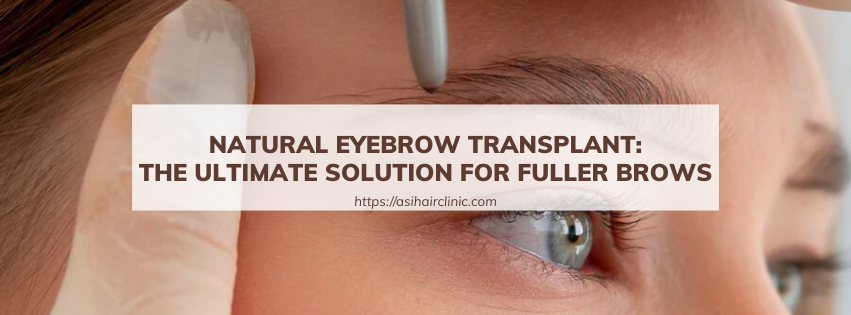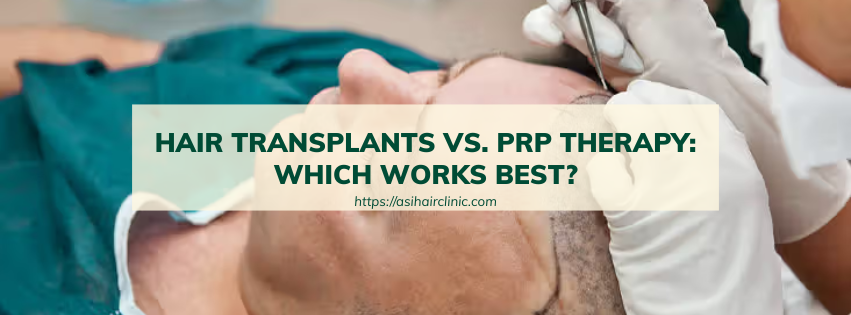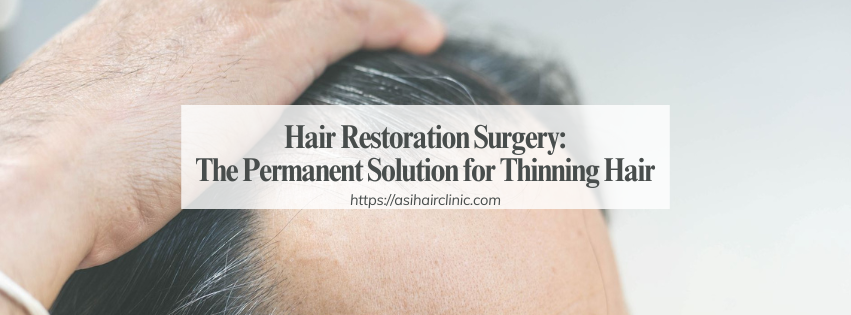How Many Hair Grafts Do You Need For A FUE Hair Transplant?
Hair loss is an issue that transcends age, gender, and geography, affecting countless individuals worldwide. While societal standards can often place undue importance on hair as a symbol of youth and vitality, the emotional toll of hair loss can be overwhelming for those experiencing it. Fortunately, advancements in medical technology have paved the way for effective solutions tailored to restore not just hair but also confidence and self-esteem. Among these solutions is the Follicular Unit Extraction (FUE) hair transplant, a minimally invasive technique that has gained popularity among those seeking to regain their natural hairline.
Understanding how many hair grafts one needs for a successful FUE hair transplant is crucial for achieving optimal results. This article will delve into the intricacies surrounding hair grafts-what they are, the factors influencing the number needed, how to determine the right amount, and the benefits and considerations related to FUE hair transplants. By examining these components in detail, we hope to provide a comprehensive guide for potential candidates seeking to understand their options better.
1. Understanding Hair Grafts
Before embarking on the journey of hair restoration through FUE, it's essential to understand what hair grafts are and how they function within the transplantation process. A hair graft typically consists of one to four hair follicles, each containing one or more hair strands. The configuration of your hair grafts is critical, as it directly influences the outcome of your hair transplant journey.
The number of hair grafts required varies significantly among individuals, contingent upon several factors such as the extent of hair loss, desired density, and characteristics of both the donor and recipient areas. Understanding these variables lays the groundwork for making informed decisions regarding your treatment plan.
1.1. What Constitutes a Hair Graft?
A hair graft can consist of various follicular unit combinations, resulting in differing aesthetics when transplanted. Typically, a single graft can either have one hair strand or multiple strands.
This variability allows for tailored approaches: patients desiring a thicker look may opt for grafts with multiple strands, while those looking for subtle enhancements might prefer single-strand grafts.
By knowing the structure of hair grafts, you can appreciate the artistry involved in hair transplantation. A skilled surgeon must consider placement, angle, and direction to ensure that the transplanted hair mimics natural growth patterns.
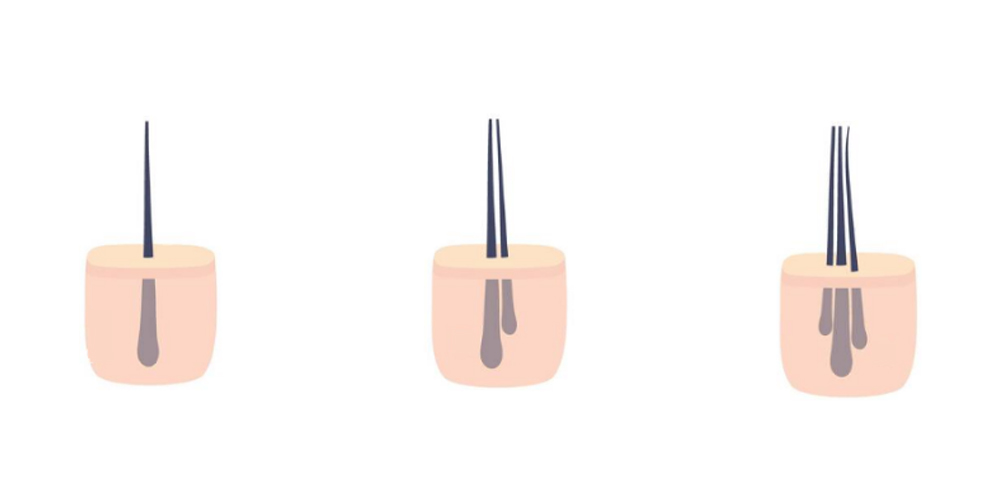
1.2. The Importance of Graft Quality
Beyond the sheer number of grafts, the quality of the harvested follicles is equally important. Factors such as the health of the donor area, the thickness of hair strands, and overall scalp condition can affect the viability of grafts post-transplant.
Healthy follicles yield better outcomes; thus, before undergoing treatment, ensuring that your hair and scalp are in optimal condition is paramount. Patients should engage in discussions about pre-operative care to maximize the potential success of their transplant.
1.3. Types of Hair Grafts
When considering a FUE hair transplant, understanding the different types of hair grafts available can help tailor your approach.
- Single-Unit Grafts: These contain only one hair strand and are often used for refining hairlines and enhancing brow density.
- Multi-Unit Grafts: Consisting of two to four hairs, multi-unit grafts are particularly beneficial for filling in larger bald spots and creating the appearance of denser hair.
- Combination Grafts: A mix of single and multi-unit grafts can create varying densities and textures, allowing for a more aesthetically pleasing result.
Ultimately, the type and combination of grafts you choose will depend on your unique hair goals, the characteristics of your donor area, and the expert guidance of your surgeon.
2. Factors Influencing Graft Requirements
Several variables come into play when determining the number of hair grafts necessary for a successful FUE hair transplant. It is vital to recognize these factors as they heavily influence the overall outcome of the procedure.
The interplay between individual characteristics and desired results creates a landscape where no two cases are identical.
2.1. Extent of Hair Loss
One of the most significant determinants for graft requirements is the severity of hair loss. Individuals classified under Norwood classifications, which categorize male pattern baldness, may find themselves needing vastly different numbers of grafts based on their stage of hair loss.
For instance, someone at an earlier stage of thinning may require fewer grafts compared to someone experiencing advanced balding. Recognizing the pattern of hair loss is crucial as it dictates the approach taken during the consultation phase.
In assessing hair loss, surgeons often employ methods such as the Ludwig scale (for female hair loss) or the Norwood scale (for men). These classifications help paint a clearer picture of what to expect and how best to tackle the situation.
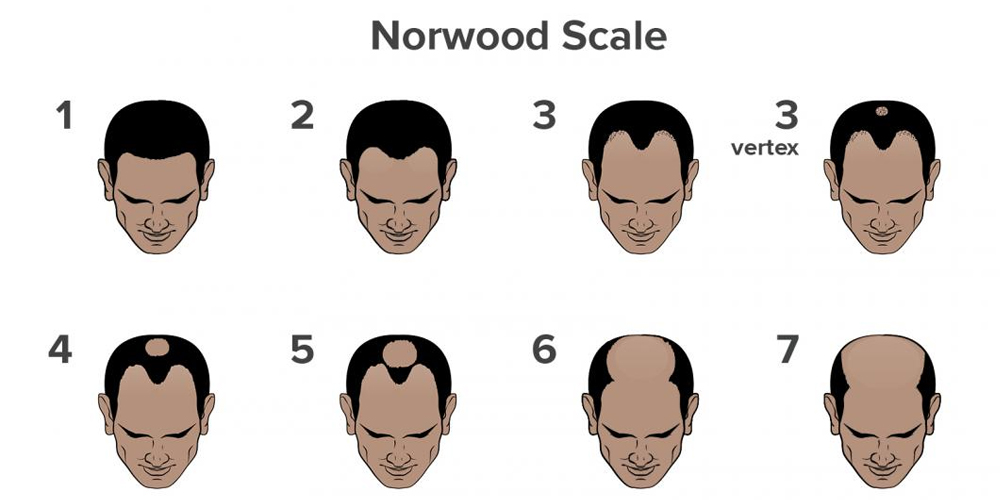
2.2. Desired Density
While some patients may simply wish to restore their hairline, others may aspire to achieve a fuller, denser look. The desired density significantly impacts the total number of grafts required, as thicker hairlines naturally necessitate more follicular units.
Patients who desire higher density often have more extensive consultations with their surgeons to align expectations. It is essential to communicate openly about your goals to enable a strategic plan that considers both aesthetic desires and practical limitations.
In addition, the perception of density can be influenced by the texture and color of hair. For instance, fine hair may require more grafts to achieve similar density compared to thick hair. As such, discussing personal hair characteristics with your surgeon is crucial for managing expectations.
2.3. Donor Area Density
The density of hair follicles in the donor area (commonly located at the back and sides of the head) significantly influences the total number of grafts available for extraction.
A denser donor area generally yields a higher number of usable grafts, while a sparse donor area may limit the options available. Surgeons often assess the donor area's quality during consultations, gauging factors such as follicle size, growth pattern, and overall health.
It’s essential to note that even if the donor area appears dense, individual follicle health and characteristics play a role. Therefore, obtaining a comprehensive assessment from a qualified professional is key.
2.4. Individual Goals and Expectations
Every patient comes to the table with distinct ambitions and perceptions of what "success" looks like, adding another variable into the equation. Some individuals may be satisfied with incremental improvement, while others may seek dramatic transformation.
Realistic goal-setting is crucial in aligning surgical outcomes with patient expectations. Open conversations with your surgeon about your dreams and aspirations can facilitate a customized plan, maximizing satisfaction with the eventual results.
Understanding that hair restoration is a gradual process, where patience plays a significant role, is also essential. With realistic expectations, patients can navigate the journey more smoothly.
3. Determining the Right Number of Grafts
Finding the appropriate number of hair grafts for an FUE hair transplant can seem daunting, but with the right guidance and preparation, it becomes a manageable process. The following steps outline the general pathway to determining your graft requirements.
Consultations serve as the foundational phase in establishing a personalized hair restoration plan.
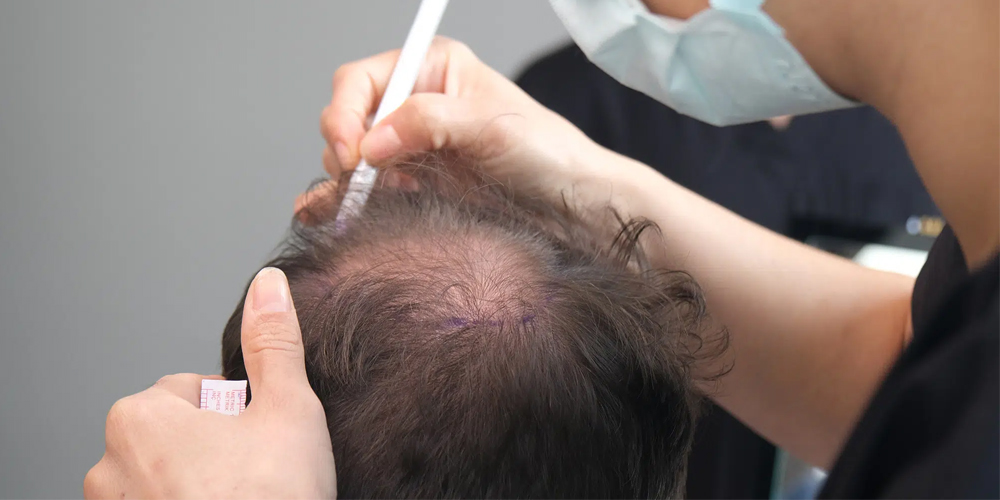
3.1. Initial Consultation
A thorough consultation with a qualified and experienced hair transplant surgeon is a critical first step in determining the exact number of hair grafts needed. During this session, several assessments will take place.
Your surgeon will scrutinize your current hair loss level, study the shape and quality of your donor area, and examine your scalp's condition. Based on these assessments, they will help establish a clear roadmap for your hair restoration journey.
3.2. Comprehensive Assessment
Following the initial consultations, the surgeon will utilize various diagnostic tools to obtain a detailed overview of your condition. Techniques such as 3D imaging of the scalp may be employed to visualize areas of hair loss better and plan the transplant accordingly.
This phase is pivotal in shaping your expectations, as it provides tangible projections regarding timelines, recovery periods, and potential outcomes.
Additionally, discussing any underlying health issues or medications you are currently taking is essential for crafting an individualized treatment approach.
3.3. Personalized Graft Calculation
After gathering all necessary information, your surgeon will proceed to calculate the approximate number of grafts needed based on individual findings. This calculation will encompass all previously discussed factors such as hair loss extent, desired density, and characteristics of the donor area.
Moreover, it is crucial to remember that this initial number is subject to adjustment as the procedure progresses and post-operative conditions evolve.
3.4. Finalizing the Surgical Plan
Once the number of grafts is determined, your surgeon will work on finalizing the surgical plan, including timelines, procedural methods, and post-operative care. This collaborative process ensures that you remain engaged and informed throughout your hair restoration journey.
At this point, patients are encouraged to ask questions and voice any concerns. Building a trusting relationship with your surgeon enhances the experience and fosters a supportive environment.
4. Benefits of FUE Hair Transplant
Among the various hair restoration techniques available today, the FUE method stands out due to its unique advantages. In this section, we will explore the numerous benefits associated with FUE hair transplants, proving why this technique has become increasingly popular among individuals seeking a solution to hair loss.
The combination of modern technology and skilled artistry lends itself to transformative results.
4.1. Minimally Invasive Technique
One of the hallmarks of the FUE hair transplant procedure is its minimally invasive nature. Unlike traditional strip harvesting techniques, FUE involves extracting individual hair follicles, eliminating the need for extensive incisions.
This reduces the risk of scarring and leads to a quicker recovery period. Patients can enjoy a sense of normalcy shortly after the surgery, returning to their daily routines without the burden of excessive downtime.
Furthermore, less trauma to the scalp translates into decreased discomfort, allowing for a smoother post-operative experience.
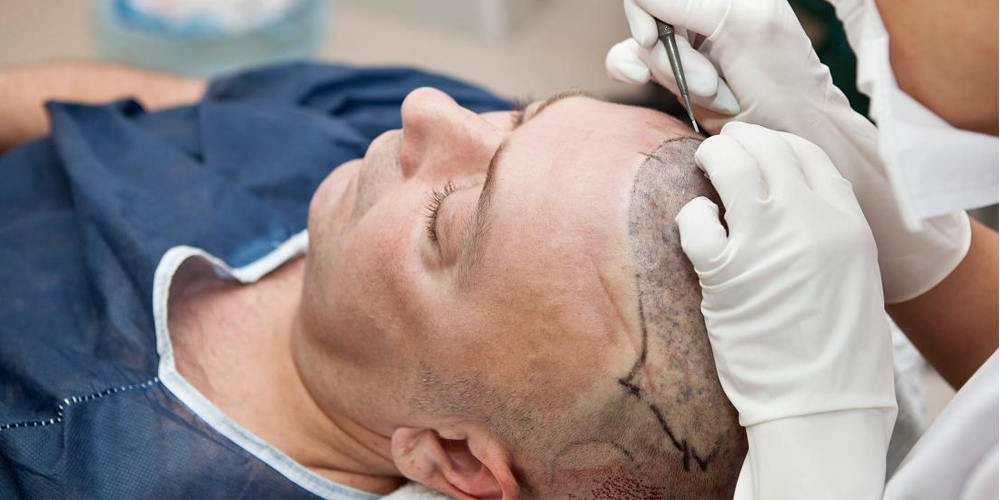
4.2. No Linear Scar
A common concern among candidates for hair transplants is the visibility of scars following the procedure. However, FUE leaves no linear scar in the donor area-a significant advantage for those considering short hairstyles or maintaining a closely cropped appearance.
Instead, small circular scars may develop, which are often virtually imperceptible once healed. This feature allows candidates to enjoy a newfound sense of freedom in styling their hair without worrying about visible remnants of the procedure.
4.3. Minimal Pain and Discomfort
The FUE procedure is typically performed with local anesthesia, drastically minimizing pain and discomfort experienced during the operation. Compared to traditional methods, where patients may feel considerable pain during and after the procedure, FUE offers a more comfortable alternative.
Post-operative pain is usually well-managed with prescribed medications, allowing individuals to transition into their recovery period seamlessly. Encouragingly, many patients report feeling relatively comfortable immediately after the surgery, further enhancing the appeal of FUE.
4.4. Natural-Looking Results
Perhaps one of the most essential benefits of the FUE technique is its ability to yield natural-looking results. When performed by an experienced surgeon, FUE can successfully replicate the natural growth pattern of hair, resulting in an undetectable restoration.
Surgeons employ artistic strategies to ensure that each follicle is placed in a manner that mimics the existing hairline, contributing to optimal aesthetic appeal.
Adopting a holistic view of the entire scalp allows for bespoke positioning of hair follicles, resulting in a cohesive and naturally integrated hair system.
5. Considerations Before Surgery
While the advantages of undergoing an FUE hair transplant can be alluring, several critical considerations must be addressed prior to making a decision. Understanding these factors can help candidates make informed choices that align with their expectations and circumstances.
Preparation and planning pave the way for a successful outcome.
5.1. Cost Implications
FUE procedures can involve considerable financial investment, and costs may vary based on several factors, including the number of grafts required, the surgeon's expertise, and geographical location.
Potential candidates should prepare for the realities of the financial commitment involved. Discussing payment plans and financing options with clinics before undergoing treatment is advisable to ease any concerns related to expenses.
Understanding the full scope of costs-including pre-operative evaluations, medications, and follow-up appointments-ensures there are no surprises along the way.
5.2. Hair Growth Cycle Understanding
A fundamental aspect of hair restoration to grasp is the natural hair growth cycle. Once transplanted, hair follicles will undergo a shedding phase followed by a regrowth period.
This timeline can often lead to anxiety for patients eagerly anticipating their new hair. Understanding that initial phases involve natural shedding helps manage expectations and promotes patience throughout the healing process.
Typically, noticeable results become evident somewhere between six months to a year after the surgery. Ensuring awareness of this timeline encourages a realistic perspective regarding the outcomes of the procedure.
5.3. Long-Term Maintenance and Care
Successful hair restoration is not solely reliant on the surgical procedure; ongoing care and maintenance play a pivotal role in sustaining your results over time. Candidates should be prepared for regular visits to their hair restoration clinic for evaluations and consultations.
In addition, self-care practices, including proper shampooing techniques, scalp massages, and the possible use of hair growth products, contribute to maintaining healthy results.
Open dialogue with your surgeon regarding recommended maintenance protocols helps equip you with the tools needed to preserve your gains effectively.
Conclusion
Determining the number of hair grafts needed for a FUE hair transplant is a multifaceted process influenced by a variety of individual factors and goals. Through careful evaluation and open communication with a qualified hair transplant surgeon, prospective candidates can ascertain an accurate estimate of the grafts required to achieve their desired outcomes.
While FUE presents a promising solution to hair loss, it is essential to maintain realistic expectations throughout the journey. Awareness of the gradual nature of hair growth, the limitations of available grafts, and the necessity for ongoing care plays a vital role in ensuring long-term success.
With thoughtful preparation and the right approach, FUE hair transplant can serve as a transformative solution, enabling individuals to regain their confidence and embrace their renewed appearance. The road to lasting change begins with knowledge, understanding, and the courage to pursue one's goals, leading to the ultimate triumph over hair loss.
LATEST POSTS




